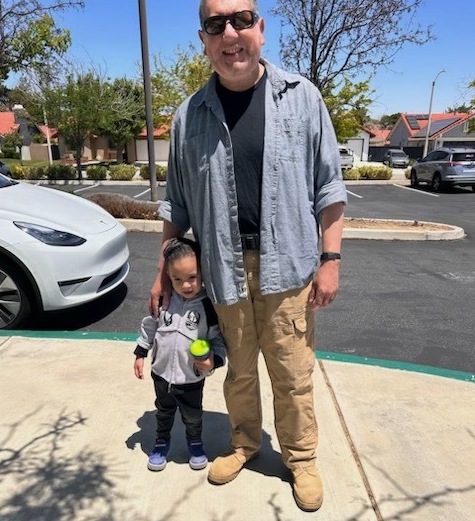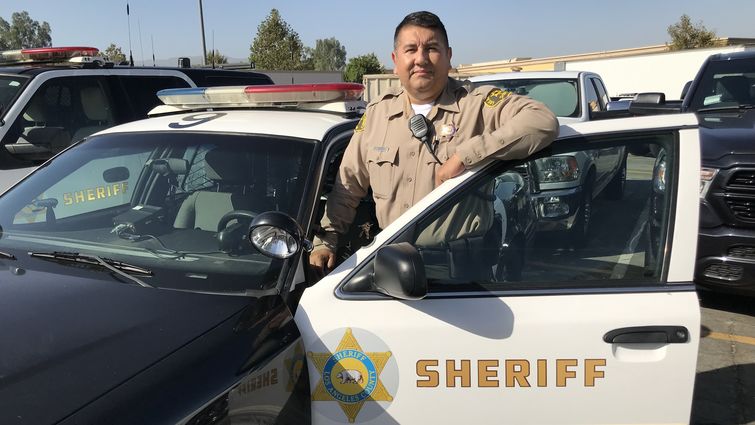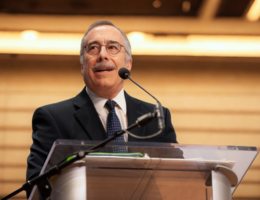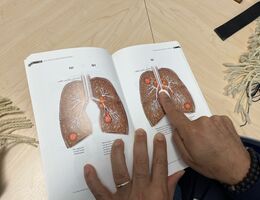

Luis Gaxiola has partnered with Loma Linda University Cancer Center for the past 11 years to receive treatment for his advanced and recurring sarcoma. Throughout the years, he has continued his duty as a Los Angeles County Deputy Sheriff.
Luis Gaxiola has endured several therapies and eight surgeries over 11 years to treat his advanced sarcoma, an uncommon group of cancers that arise in the bones and connective tissue. The journey has proven long and arduous, with the sarcoma recurring several times, yet the 52-year-old Los Angeles County Deputy Sheriff has continued his duty and watched his family grow.
He says neither would have been possible without steadfast perseverance or advancements in cancer treatment delivered by a specialized care team like the one at Loma Linda University Cancer Center. For July’s Sarcoma Awareness Month, Gaxiola shares his experience to heighten awareness about the disease, highlight the expertise available to help patients, and spread a message of encouragement and hope for those living with cancer.
Gaxiola’s experience with sarcoma has been unusual, says Mark Reeves, MD, PhD, director of the Cancer Center and the surgical oncologist who has performed Gaxiola’s most recent procedures. Typically, those diagnosed with the sarcoma cannot get it surgically removed after its second or third recurrence, Reeves says, but Gaxiola’s unusual recurrence pattern enabled him to undergo surgical removal of the sarcoma eight different times.
“Every patient and every cancer are different,” Reeves says. “Many hear of advanced or recurrent cancer and assume that nothing can be done, but that’s not necessarily the case. If we’d been nihilistic about Mr. Gaxiola’s recurrences, he might not be here right now. He’s a walking miracle.”
Symptoms first surfaced in late 2011 for Gaxiola, who noticed intermittent pain in his hip while on patrol. At first, he says he chalked up the pain to new gear from his uniform, but when a lump appeared in the same area, his wife urged him to visit a doctor.
“I ignored the pain and the signs at first and tried to tough it out, as men are often raised and tend to do.” he said. “Had I stuck to that plan and not taken my wife's advice, I wouldn’t be here right now.”
Testing determined the lump to be histiocytic sarcoma, a rare and aggressive sarcoma. Gaxiola’s doctor referred him to LLU Cancer Center, which Reeves says features a renowned level of specialized sarcoma care for patients in the region. There, Gaxiola first encountered Carlos Garberoglio, MD, a surgical oncologist, who spoke of many patients living with their cancers for up to two decades. Gaxiola also read histiocytic sarcoma patients’ stories online, taking special note of those who lived long lives despite their disease.
Sarcomas nowadays are treatable, even when advanced or have spread.Dr. Mark Reeves
Care team members’ encouraging words and patients’ stories helped Gaxiola build hope and determination to persevere through a decade of cancer recurrences and treatments. He has undergone radiation, infusion therapy, and extensive surgeries to remove and reconstruct areas affected by the sarcoma, mainly in the thigh and abdominal regions — groin, bladder, intestines — and the thyroid. Various specialties and sub-specialties have collaborated to deliver Gaxiola’s care, Reeves says, including medical oncology, radiation oncology, surgical oncology, plastic surgery, vascular surgery, orthopedic surgery, urology, physical therapy, and rehabilitation.

Gaxiola enjoys spending time with his three-year-old grandson, Anakin.
Reeves says the recent decades of advances in sarcoma care from diagnostics to treatment have enabled many patients like Gaxiola to prolong their lives in a fulfilling way. Surgical technology’s evolution allows patients more opportunities for multiple repeat operations, Reeves says, while systemic therapies, infusion therapy regimens, and radiation therapy have grown even more effective in treating sarcomas. Reeves says the combination of these modalities is expanding possibilities in sarcoma care and survival daily.
“Sarcomas nowadays are treatable, even when advanced or have spread,” Reeves said. “Mr. Gaxiola’s 11-year-long journey and approach to this process speaks to that fact.”
Now, Gaxiola hopes to share his experience, spreading the same message that helped him throughout the decade: new care possibilities can provide hope and perseverance for patients and loved ones facing cancer. Gaxiola is celebrating a year since scans revealed no evidence of disease in his body. He has since watched his grandson turn three years old and recently returned from a vacation in Washington, D.C., with his wife. He continues to undergo long-term surveillance for sarcoma.
“I was diagnosed in 2012, and here we are in 2023,” he says. “The care teams have saved my life and rebuilt me repeatedly. The fact that I can still get up and go to work is a real credit to the level of care they can give. I’m not dying of cancer, I am living with it.”
Loma Linda University Cancer Center offers patients comprehensive care that gives them the best opportunity to face cancer. Learn more about all of the resources offered to patients at the Cancer Center at lluh.org/cancer-center.


